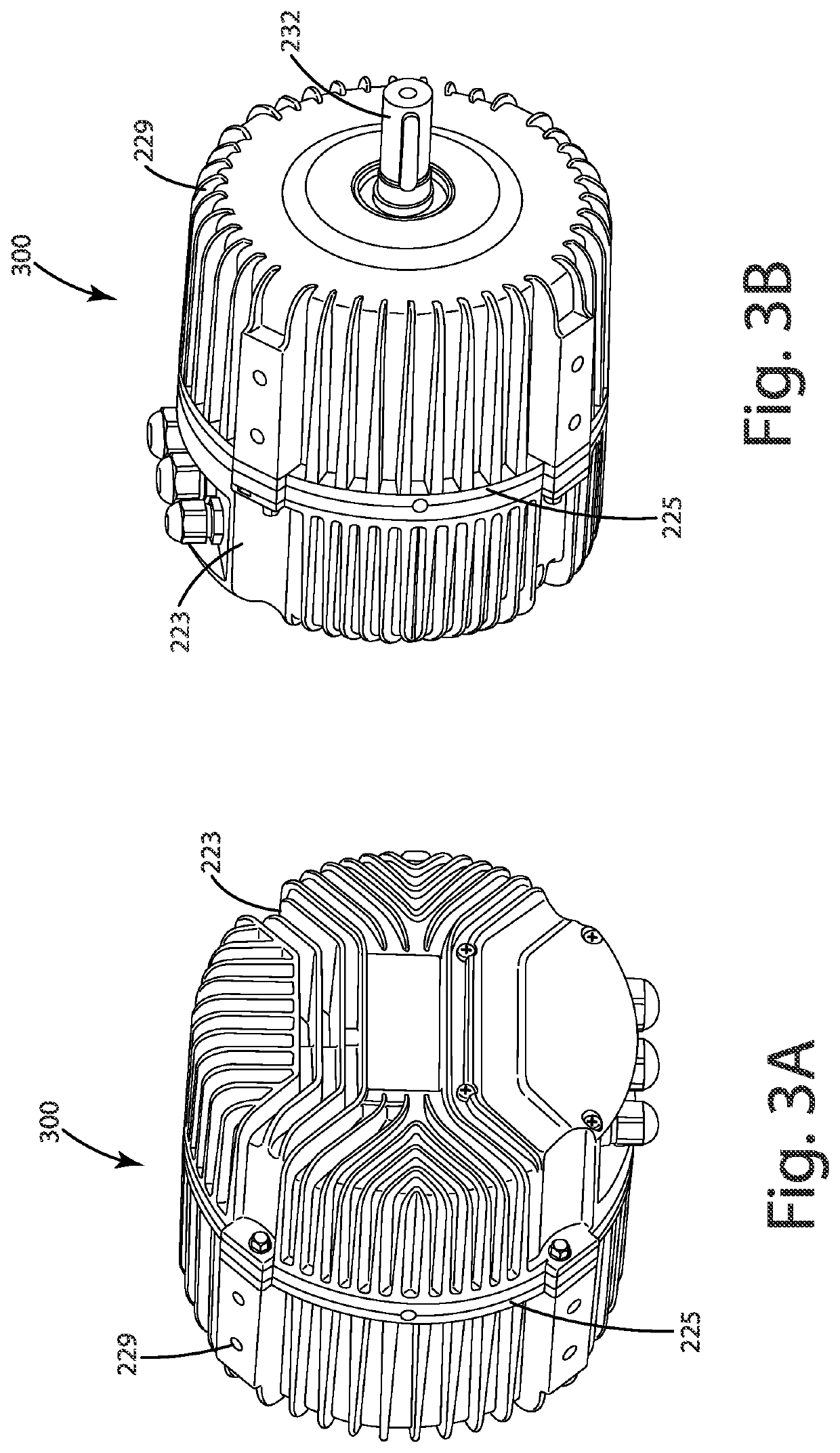Systems and methods for interior permanent magnet synchronous motor control
a permanent magnet synchronous motor and control system technology, applied in the direction of dynamo-electric converter control, magnetic circuit shape/form/construction, electronic commutators, etc., can solve the problems of speed and/or position sensor(s) of sensor-based pmsm systems, add additional electronics, and take up space, so as to reduce the amount of time, minimize the effect of tim
- Summary
- Abstract
- Description
- Claims
- Application Information
AI Technical Summary
Benefits of technology
Problems solved by technology
Method used
Image
Examples
Embodiment Construction
[0050]This disclosure generally relates to systems and methods for control of permanent magnet synchronous motor (“PMSM”) systems that can overcome motor parameter variation and achieve robust controls. One aspect of the present disclosure is generally directed to a dynamic direct flux control (“DDFC”) method, a motor controller implementing a DDFC method, as well as ECM systems implementing a DDFC method. DDFC generally refers to a system or method for control of a PMSM with robustness to motor parameter variations caused by external forces, such as severe operating conditions present in a severe operating environment. Another aspect of the present disclosure is generally directed to a multi-model stator flux observer. One aspect of the present disclosure relates to selection of a multi-model flux observer model transition trigger or set of triggers, such as one or more particular speeds or frequencies, that initiate transition of the dominate model of the multi-model stator flux o...
PUM
 Login to View More
Login to View More Abstract
Description
Claims
Application Information
 Login to View More
Login to View More - R&D
- Intellectual Property
- Life Sciences
- Materials
- Tech Scout
- Unparalleled Data Quality
- Higher Quality Content
- 60% Fewer Hallucinations
Browse by: Latest US Patents, China's latest patents, Technical Efficacy Thesaurus, Application Domain, Technology Topic, Popular Technical Reports.
© 2025 PatSnap. All rights reserved.Legal|Privacy policy|Modern Slavery Act Transparency Statement|Sitemap|About US| Contact US: help@patsnap.com



